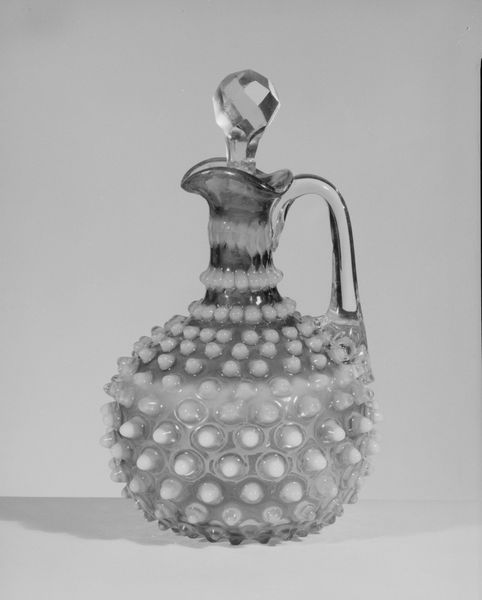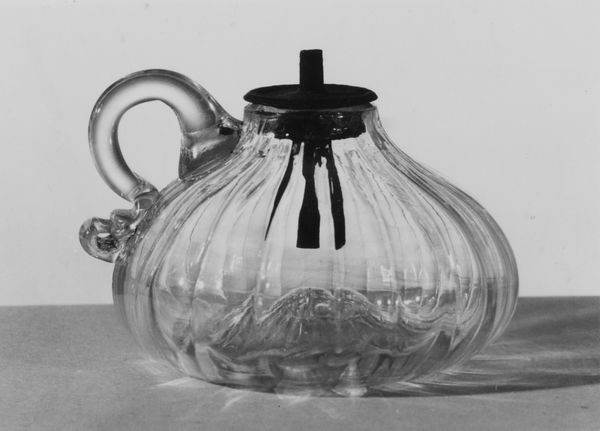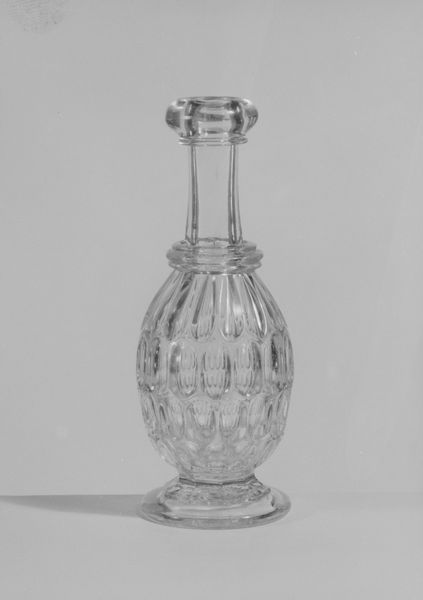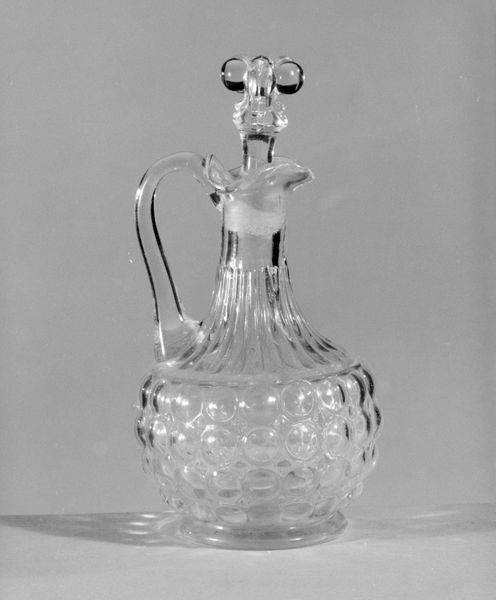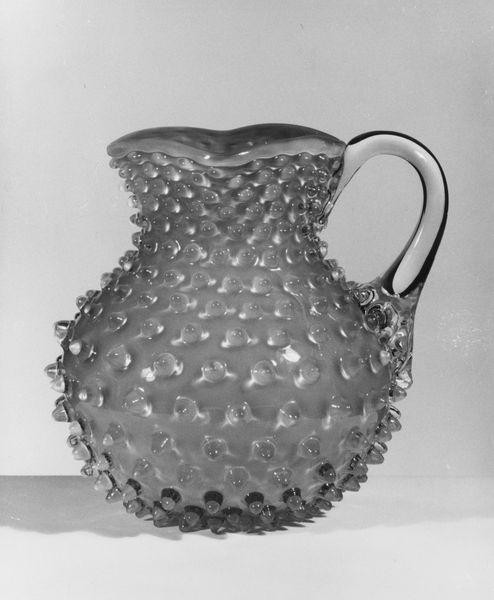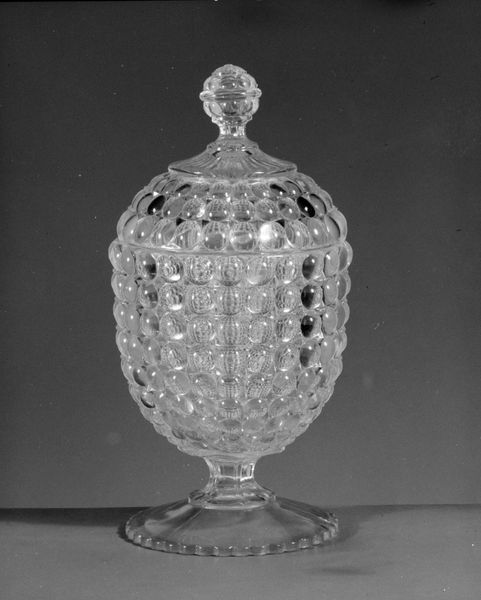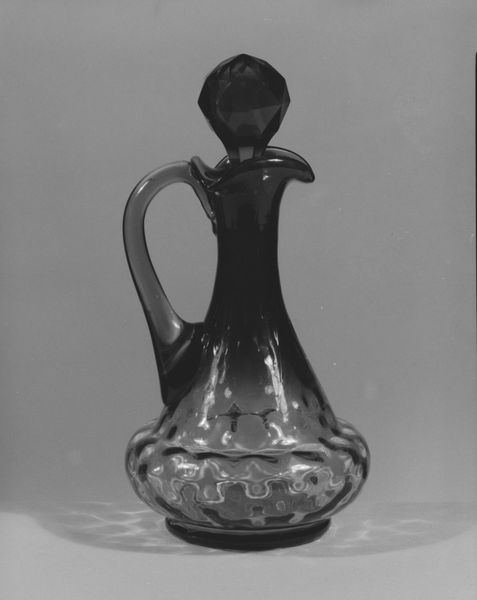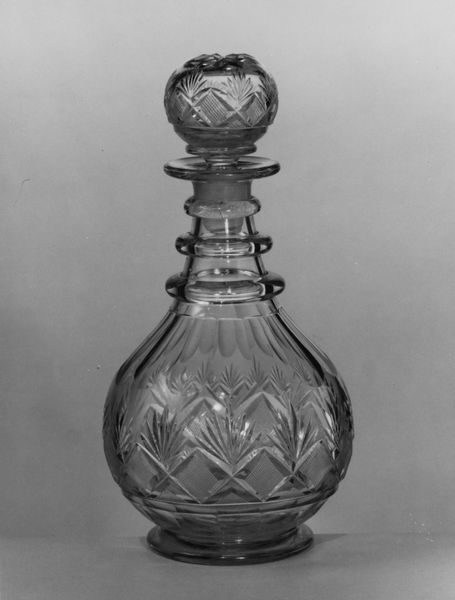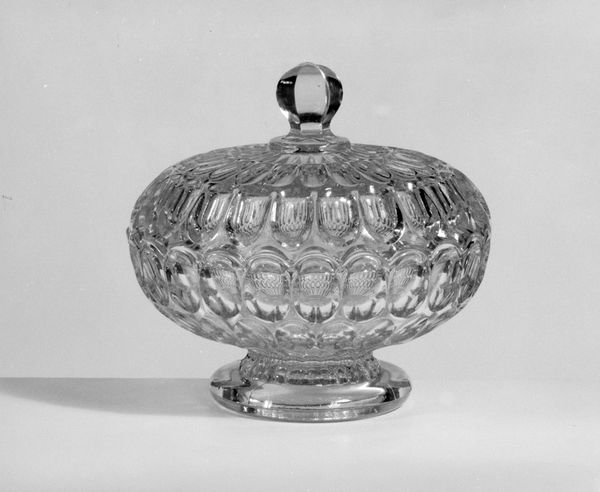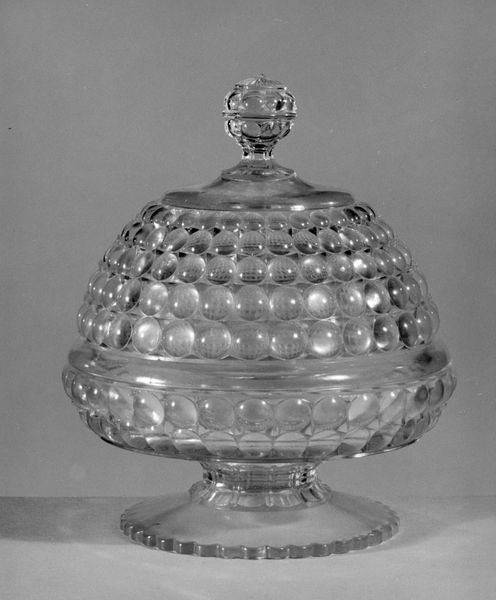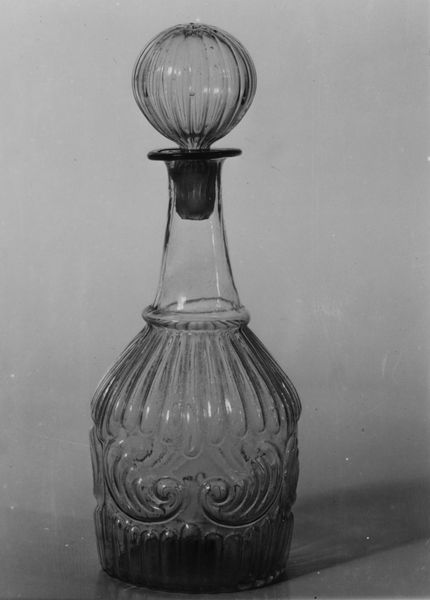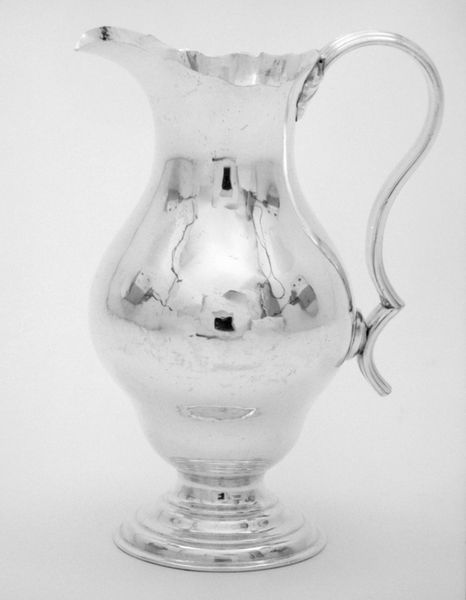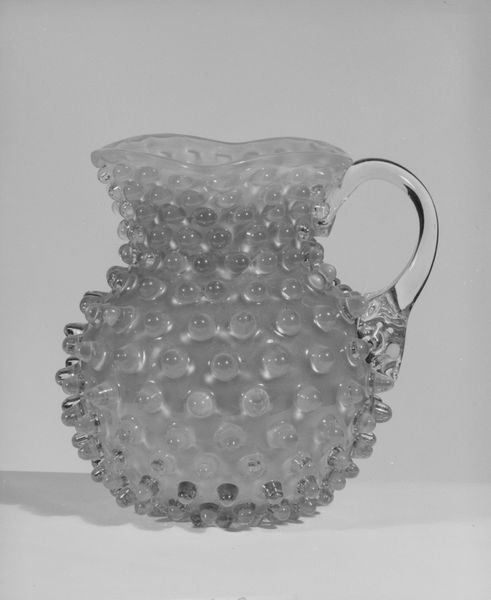
glass, sculpture
#
glass
#
sculpture
Dimensions: H. 7 1/8 in. (18.1 cm)
Copyright: Public Domain
Curator: Oh, this is striking! There’s something both delicate and robust about this cruet; like a formal gown made of spun sugar. Editor: Indeed! Here we have a piece made by Hobbs, Brockunier and Company, between 1887 and 1896, titled “Hobnail Cruet”. Curator: Hobbs, Brockunier… I’m getting a sense of prosperity and ornate tastes from the late Victorian era. The hobnail design – all those raised glass dots – reminds me of dewdrops or perhaps the surface of an exotic fruit. There is a latent, almost somatic pleasure. Editor: What I find fascinating is the way they democratized luxury through industrial glass production. Suddenly, detailed craftsmanship, like these hobnails, became accessible. But consider the labor: Each piece still required careful handling and skilled mold work. Curator: Yes, you see the beauty born of labor; but the form feels so familiar! Cruets and ornate pouring vessels resonate throughout art history, carrying layers of cultural meaning around abundance, ritual, and the serving of guests. Do you feel any sense of continuity? Editor: I'm stuck on how the means defined the form! Glass-blowing, pressing… these determined the overall aesthetic. The final product exists at the intersection of artistic intention, factory production, and what the market demanded. The rise of industrialization created a demand for decoration! Curator: Even this stopper speaks volumes! Cut glass mimicking gemstones, its facets catching light and attention. Consider its alchemical, precious association. The hobnail, repeated along the entire vessel’s body, creates an impression of luxury, of meticulous workmanship beyond simple utility. It echoes a fascination for gem studded decoration. Editor: So much of this elegance and detail emerges directly from industrial processes attempting to mimic handmade, bespoke traditions, though on a wider scale and that is the contradiction that compels me to look closer at it. Curator: Seeing through the glass now I recognize the cultural legacy that a vessel embodies. Editor: And with that, you notice the layers of artistry, labor, and consumption at work!
Comments
No comments
Be the first to comment and join the conversation on the ultimate creative platform.
